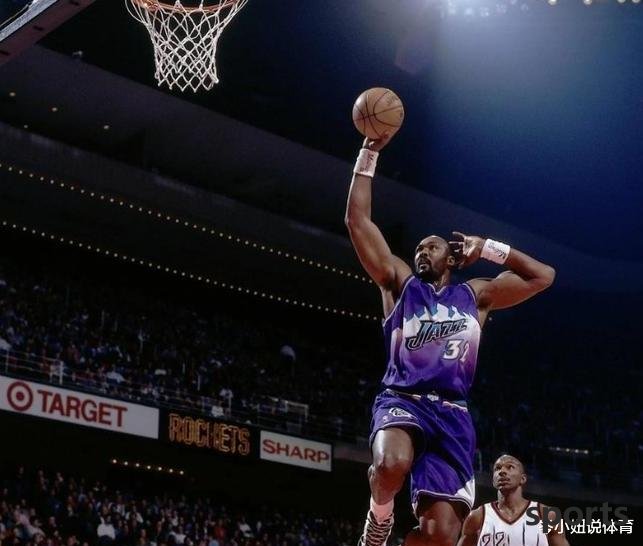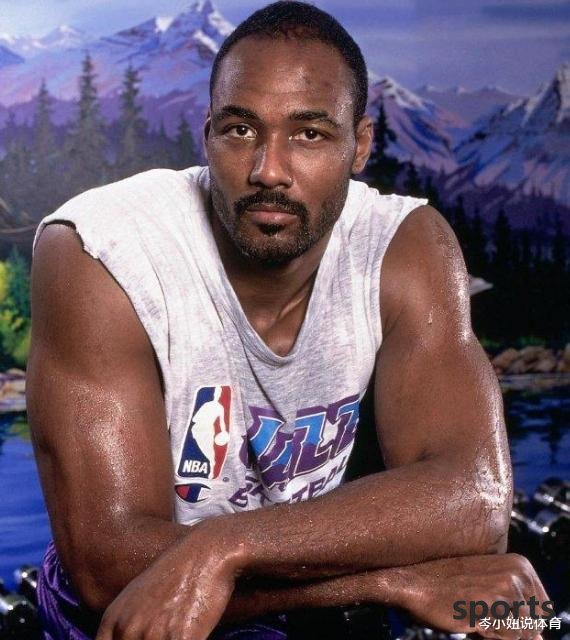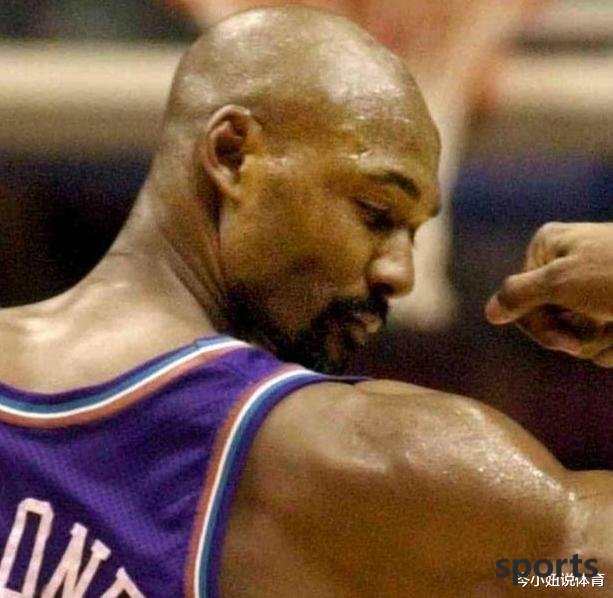Although Kal Malone has no championship in his career, he is Jordan s strongest rival in his career
On June 18, in the NBA's history scroll, Michael Jordan's name is forever engraved on the most dazzling gold foil. The halo of six championship trophys, five MVPs, and ten scoring kings makes him the indisputable "God of Basketball". However, in this legendary narrative, Carl Malone's existence is like a rock that cannot be ignored - he has never touched the O'Brien Cup, but has become the most awesome opponent of the Jordan era with his 19 seasons of steel will and stable output. As the truth of the arena says: "Greatness needs great opponents to reflect." When Jordan's historical status was constantly deified, Malone's image as the "strongest challenger" was also sublimated, and his regrets and perseverance actually created an alternative epic feeling. **1. Hardcore competition of data machines: When efficiency meets dominance, open the career data of the two, the confrontation between Malone and Jordan can be called "the ultimate interpretation of spear and shield." Jordan is known for his horror scoring ability of 30.1 points per game (first in history), while Malone sets the benchmark for his career's durability of 36,928 points (third in history). What is even more amazing is that Malone still maintained his peak state between Jordan's two retirements (1994-1995, 1999-2003): from 1997 to 1999, two of which beat Jordan to be elected as the regular season MVP (1997, 1999). This competitive rhythm of "you just finished singing and I came on stage" just proves that Malone is not a supporting role living in the shadow of Jordan, but a superstar who can independently define the era. The direct showdown between the two is even more full of gunpowder. In the first game of the 1997 Finals, Malone missed both free throws in the last 7.5 seconds, indirectly creating Jordan's "Flu Battle" myth; and in the sixth game of the 1998 Finals, Malone scored 31 points and 11 rebounds in the game, but was intercepted by Jordan at the last moment, resulting in a classic background of "last shot". Behind these dramatic moments is an underrated fact: the Jazz are the only team to push Jordan’s Bulls to Game 6 in the Finals (1998). If Malone and Stockton's "Pick-and-roll Double Devil" combination was not strong enough, Jordan's legend might have lacked the most shocking footnotes. **2. Mirror contrast of technical characteristics: violent aesthetics vs elegant killing** From the perspective of technical style, Malone and Jordan represent two extreme aesthetics of basketball in the 1990s. Jordan's offense is like a surgical procedure, with a backward jump shot, aerial turnover, and breakthrough change all exuding elegant accuracy; while Malone is a heavy tank, his low post back shot, elbow jump shot and fast break dunk are full of original power. This contrast is more obvious on the defensive end: Jordan's steal prediction and blocking timing are artistic, while Malone's defense is based on the 220-pound position and the psychological deterrence of the "iron elbow warning". Interestingly, the technical flaws of the two also form subtle complementarity. Jordan's three-pointers were not stable (career shooting percentage 32.7%), while Malone's mid-range distance (especially near the free throw line) was as stable as a rock (career shooting percentage 51.6%); Malone lacked Jordan's passing vision (average 3.6 assists per game), but his high-level support ability provided a fulcrum for Stockton's threading thread. This trait difference makes their confrontation transcend the simple category of "win and lose" and becomes a collision between two basketball philosophy - the confrontation between individual heroism and team-first, and the elegance and heavy struggle. **3. Reinterpretation of the context of the times: When "no crown" becomes an alternative medal** In the contemporary basketball evaluation system where championship theory is prevalent, Ma Long's "no crown" should have been a fatal injury, but history gave him special tolerance. The reason is that Jordan's absolute domination actually eliminates the conventional logic of "shaming of runner-up" - just as the "Bad Boys Legion" of the Pistons in the 1990s was remembered for blocking Jordan many times, Malone's experience of failing in the finals twice became the yardstick for measuring Jordan's greatness. NBA legend Charles Barkley once said bluntly: "It is not embarrassing to lose to Jordan, it just means that you and he were born in the same era." The deeper reason lies in the "anti-frailty" of Malone's career. He still averaged 23.8 points per game after he was 35 years old (1998-99 season), and at the age of 40 he could score 30+ in a single game (2003 against the Lakers). This kind of endurance that violates the laws of sports is somewhat scarce than the champion. When modern players are resting due to load management, Malone's image as "Iron Man" with 1,476 appearances in his career (the seventh in history) has become a spiritual totem. As Sports Illustrated commented: "Carl proved with 19 years that greatness does not have to be measured by rings." **4. The butterfly effect of historical status: the symbiotic relationship of Jordan's myth ** The improvement of Malone's historical status is essentially closely related to the "inflation" evaluated by Jordan. Over time, Jordan's six championships were given more and more mythical colors, and Malone, as the main "villain", naturally rose. This is similar to Chamberlain's situation in the era of Russell: the more Russell, who was 11 champions, was deified, the more tragic Chamberlain, who lost to him seven times, became. In the official 75th anniversary of the NBA, the match between Malone and Jordan is even longer than Pippen. This narrative choice hints at the league's recognition of its "ultimate touchstone" identity. The changes in the evaluation of contemporary stars also prove this. When LeBron James was swept by the Warriors in the 2018 Finals, public opinion generally believed that "losing to the dynasty team will not hurt greatness"; similarly, when Kevin Durant lost to the Bucks in the 2021 playoffs, the media emphasized more that he was "unable to support himself". This migration of the evaluation system allowed Malone's failure to be reinterpreted - he led Stockton, who was nearly 36 years old, to some extent, to a more tragic heroic color than leading a single core team. Looking back in 2025, Karl Malone's image has been sublimated from "the uncrowned king" to a symbol of a competitive spirit: not all persistence can win a championship, but true greatness is never afraid of being compared. When Jordan's documentary "The Last Dance" used a lot of space to describe the Jazz's threat, when the bronze statue of Malone stood outside the Delta Center Arena, history had already given a fair judgment - some legends were exactly complete because of regret; some great ones were just needed to fulfill the situation by opponents. 


- Recent Posts
-
- Thunder is unique! Western tea
- ESPN talks about winners and l
- Grizzlies inside star: I under
- Ball Dad: Don’t be too late! T
- Historical questions, former Y
- Average of 14+5.6, but why is
- How many opportunities are the
- Two major substitutes hit the
- G1 may become an opportunity f
- " "Jack James refused
- Hot Posts
-
- Lin Zhijie s current situation
- The Celtics are on sale! Zhu H
- Intercepting Boss Hu Cai, let
- Stockton: Malone is one of the
- Yu Jiahao joined La Liga and o
- Amen Thompson was selected for
- Cook: I witnessed James start
- Wuku Warriors are better than
- Change your fate against the w
- The Old Wolf King is in troubl
- Is it expected to enter the Ea
- The 20th major quarters are ou
- Lakers sign contract with the
- The embarrassing 1-1 in the fi
- He made key three-pointers in
- James is expected to form a te
- Doncic sings Redick: He is ver
- Clippers official praise "Welc
- He is clearly the sixth player
- Edwards made 64 free throws in
- search
-
- Links
-
